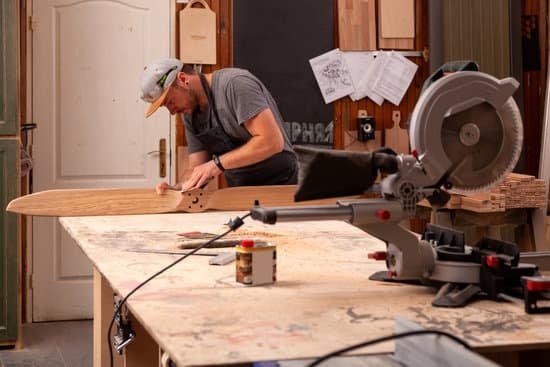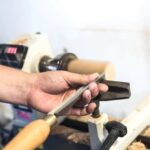Woodworking bench vises are essential tools for any woodworking enthusiast, providing a secure grip on workpieces and allowing for precision and control during various woodworking projects. When it comes to installing a woodworking bench vise, fasteners are crucial in ensuring a stable and secure attachment to the workbench. In this article, we will explore the process of installing woodworking bench vise fasteners, from understanding the different types of vises and fasteners to providing a step-by-step guide for installation.
Before diving into the installation process, it’s important to have a good grasp of the different types of woodworking bench vises available. From face vises to tail vises and shoulder vises, each type serves a specific purpose in enhancing the functionality of your workbench. Additionally, understanding the various fasteners that can be used with these vises is also essential in choosing the right one for your particular needs.
When it comes to selecting the right fasteners for your woodworking bench vise, factors such as material strength, size, and compatibility with the vise must be taken into consideration. Additionally, having the essential tools and materials at hand is crucial for a smooth installation process. In the following sections, we will delve deeper into these topics and provide a comprehensive guide for installing woodworking bench vise fasteners effectively and securely.
Understanding the Different Types of Woodworking Bench Vises
Woodworking bench vises come in a variety of types, each with its own specialized function and features. It is important to understand the different types available in order to choose the right one for your specific woodworking needs. Below are some common types of woodworking bench vises:
- Front Vise: This type of vise is commonly used for holding workpieces flat against the surface of the workbench. It is typically mounted on the front edge of the workbench and can be used for a wide range of woodworking projects.
- End Vise: End vises are designed to hold long or oversized workpieces on the end of the workbench. They are often used for hand planing or other tasks that require securing workpieces along their length.
- Portable Vise: These vises can be easily attached and removed from a variety of surfaces, making them ideal for those who need a vise that can be moved between different workbenches or job sites.
Understanding the different types of woodworking bench vises will help you determine which one best suits your specific projects and working style. Whether you need a vise for general clamping, precision woodworking, or portable use, there is a type of vise that will meet your needs.
When it comes to choosing a woodworking bench vise fastener, it’s important to consider factors such as material, size, and strength. The fasteners play a crucial role in securing the vise to the workbench and ensuring stability during use. It’s vital to choose fasteners that are durable and capable of withstanding the forces exerted on them during woodworking tasks.
Here are some common types of fasteners used for installing woodworking bench vises:
- Bench bolts
- T-bolts
- Toggle clamps
By carefully selecting the right type and size of fastener for your woodworking bench vise installation, you can ensure a secure and stable setup that will withstand heavy-duty use.
Choosing the Right Fasteners for Your Woodworking Bench Vise
When it comes to choosing the right fasteners for your woodworking bench vise, there are a few key considerations to keep in mind. The type of fastener you select will depend on the material of your workbench, the specific vise design, and the amount of force you expect to apply. Common options for fasteners include wood screws, lag bolts, and machine screws with nuts.
If you have a wooden workbench, wood screws are often the go-to choice for fastening your bench vise. These screws are designed to easily grip into wood and provide a secure hold for your vise. Make sure to choose screws that are long enough to penetrate through the thickness of your workbench and provide adequate support.
For heavier-duty applications or workbenches made from materials other than wood, lag bolts may be the better option. Lag bolts require pre-drilled holes and can be secured with a wrench for added stability. It’s important to accurately measure and mark the placement of these holes to ensure proper alignment and prevent any splitting or damage to your workbench.
Finally, machine screws with nuts offer flexibility in terms of length and can be used with various types of vises. They require tapping holes into the workbench surface and are secured by tightening the nut against the underside of the bench. This method provides a strong connection between the vise and bench surface.
| Fastener Type | Ideal Workbench Material |
|---|---|
| Wood Screws | Wooden Workbenches |
| Lag Bolts | Heavy-Duty Applications or Non-Wooden Workbenches |
| Machine Screws with Nuts | Versatile Option for Various Vises and Workbench Surfaces |
By carefully considering these factors, you can select the appropriate fasteners for your woodworking bench vise installation. Once you have chosen the right type of fastener based on your specific needs, you will be ready to move on to gathering all necessary tools and materials required for a successful installation process.
Essential Tools and Materials Needed for Installation
When it comes to installing woodworking bench vise fasteners, having the right tools and materials is essential to ensure a successful and secure installation. Here are some of the key items you will need for the job.
Tools
One of the most important tools you will need for installing woodworking bench vise fasteners is a drill. A power drill with appropriate drill bits is crucial for creating holes in your workbench to attach the vise fasteners securely. Additionally, you may also need a wrench or socket set for tightening and securing the fasteners into place.
Materials
In terms of materials, you will need the actual fasteners themselves, such as bolts or screws, as well as washers and nuts. It’s important to choose fasteners that are suitable for woodworking applications and can withstand heavy-duty use. Additionally, depending on your workbench material, you may also need wood glue or epoxy to ensure a strong bond between the fastener and the bench surface.
Other Considerations
In addition to these basic tools and materials, it’s important to have a clear understanding of the specific requirements for your woodworking bench vise and fastener installation. This includes knowing the size and specifications of your vise and selecting appropriately sized fasteners that are compatible with its design.
By ensuring that you have all the necessary tools and materials on hand before starting your installation, you can streamline the process and avoid any potential setbacks along the way.
Step-by-Step Guide
Preparing Your Workbench
Before installing the woodworking bench vise fasteners, it is important to prepare your workbench. Make sure the surface is clean and free of any debris that may interfere with the installation process. Additionally, measure and mark the exact location where you want to install your vise fasteners. This will ensure a precise and neat installation.
Gathering the Necessary Tools and Materials
To install woodworking bench vise fasteners, you will need a few essential tools and materials. These may include a drill with bits, screws or bolts, a wrench, a measuring tape, and a pencil for marking. It is crucial to have all these items readily available before you begin the installation process to avoid any interruptions.
Installing the Woodworking Bench Vise Fasteners
Once your workbench is prepared and you have all the necessary tools and materials at hand, it’s time to start installing the woodworking bench vise fasteners. Begin by marking the positions for drilling on your workbench using a pencil. Then, carefully drill holes based on those markings.
Next, secure the fasteners in place using screws or bolts and tighten them with a wrench. Be sure to check for stability and make any necessary adjustments to ensure that your vise fasteners are securely installed.
By following these step-by-step instructions for installing woodworking bench vise fasteners, you can ensure that your vise is firmly attached to your workbench, providing a stable platform for all your woodworking projects.
Tips and Tricks for Ensuring a Secure and Stable Installation
There are a few tips and tricks to keep in mind when it comes to ensuring a secure and stable installation of woodworking bench vise fasteners. Follow these guidelines to make sure that your vise is properly installed and ready for use.
Here are some tips and tricks:
- Use the right type of fasteners: When installing woodworking bench vise fasteners, it’s important to choose the right type for the job. Look for heavy-duty screws or bolts that are designed for securing heavy loads. Make sure they are the appropriate size and length for your specific vise.
- Use a mounting template: To ensure proper alignment and spacing of the fasteners, consider using a mounting template. This will help you accurately mark the locations for drilling holes and prevent any mistakes in placement.
- Pre-drill pilot holes: Before attaching the fasteners, it’s recommended to pre-drill pilot holes in the workbench. This will make it easier to drive in the screws or bolts and reduce the risk of splitting or damaging the wood.
- Tighten securely: Once the fasteners are installed, make sure to tighten them securely using a screwdriver or wrench. This will ensure that the vise is firmly attached to the workbench and prevent any wobbling or instability during use.
By following these tips and tricks, you can ensure that your woodworking bench vise fasteners are securely and stably installed, providing you with a reliable tool for all your woodworking projects.
Common Mistakes to Avoid When Installing Woodworking Bench Vise Fasteners
When installing woodworking bench vise fasteners, there are a few common mistakes that many people make. These mistakes can lead to a less secure and stable installation, which can affect the functionality of your vise. By being aware of these common errors, you can ensure that you are able to install your woodworking bench vise fasteners properly and avoid any potential issues down the line.
One common mistake to avoid when installing woodworking bench vise fasteners is not using the appropriate size and type of fastener for the job. It is important to choose fasteners that are compatible with the material of your workbench and provide a strong grip. Using the wrong type or size of fastener can result in a loose or unstable vise, which can be dangerous when working with heavy wood pieces.
Another mistake to avoid is not properly pre-drilling pilot holes for the fasteners. Without pilot holes, there is a risk of splitting the wood when driving in the screws or bolts, especially if you are working with hardwood. Pre-drilling ensures that the fasteners go in smoothly and securely, providing a solid anchor for your woodworking bench vise.
Additionally, it is crucial to avoid over-tightening the fasteners when installing a woodworking bench vise. Over-tightening can strip the threads or cause damage to both the fastener and the workbench itself. It’s important to find the right balance between securing the vise tightly and not causing any unnecessary strain on the materials involved.
| Common Mistakes | How to Avoid |
|---|---|
| Using inappropriate size/type of fastener | Choose compatible and strong grip fasteners |
| Not pre-drilling pilot holes | Ensure smooth and secure installation by pre-drilling |
| Over-tightening fasteners | Find balance between securing tightly without causing strain |
Final Thoughts
In conclusion, installing woodworking bench vise fasteners is an essential step in ensuring the stability and functionality of your vise. By understanding the different types of bench vises and selecting the right fasteners for your specific needs, you can create a secure and durable setup that will support your woodworking projects for years to come.
With the right tools and materials, along with a careful step-by-step approach to installation, you can enjoy the benefits of a well-installed woodworking bench vise and fasteners.
One of the key takeaways from this process is the importance of choosing high-quality fasteners that are suitable for heavy-duty use. By investing in durable screws or bolts that are designed specifically for woodworking applications, you can ensure that your vise will remain firmly in place during even the most demanding tasks. Additionally, paying attention to proper positioning and alignment during installation will help to prevent common mistakes such as misalignment or instability.
Ultimately, taking the time to install your woodworking bench vise fasteners correctly will yield significant benefits in terms of efficiency and safety. A securely mounted vise allows for precise and reliable clamping, which is crucial for achieving accurate and professional results in your woodworking projects. By following these guidelines and utilizing the tips provided, you can enjoy the peace of mind that comes with knowing you have created a solid foundation for your woodworking endeavors.

Hi everyone! I’m a woodworker and blogger, and this is my woodworking blog. In my blog, I share tips and tricks for woodworkers of all skill levels, as well as project ideas that you can try yourself.





